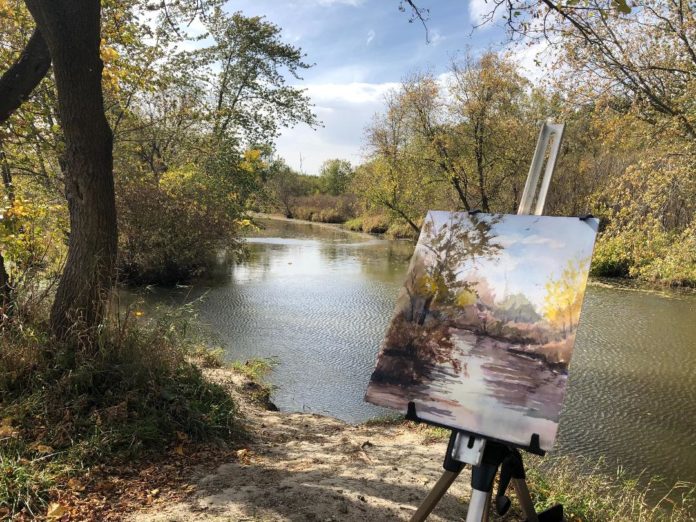
On Painting Rivers > How do you paint 100 landscapes of 20 rivers without them looking alike? See how these plein air painters are dedicating their time to both painting and the environment, and how folks from artists to anglers are helping them discover each location’s unique features.
BY AVON WATERS
Five guys, four seasons, 20 Indiana Rivers, and 100 paintings in the next 18 months – that’s the basic formula that four Indiana landscape artists and I plan to use to paint the major Indiana waterways. The project began as an idea of “What’s next?” as Covid-19 cancelled many exhibitions and events for me and my fellow artists. My artist friends and I decided we needed a goal, something to work towards even when we were not at paint outs.
An artist friend, Dan Woodson, once told he wanted to paint Indiana Rivers. In mid-August I brought up the idea of painting them to Dan and his brother Tom Woodson. Dan founded IPAPA while working on a similar project in 1998 with four other artists – they produced a book and traveling exhibition and ultimately Dan formed IPAPA to bring plein air opportunities to more Indiana artists. That was the model we decided to use for this project.
We would bring people in using art but educate the public about the pressures our rivers face and the conservation efforts to make them better for everyone. The text of a book accompanying the traveling exhibits would focus on rivers as a valuable resource that need protection. The goal of the art is to bring awareness.
Our styles of painting vary greatly. Dan and Tom paint more classic plein air, my work dances sometimes on the knife’s edge of abstraction. They paint in oil. I paint primarily in pastel. While illustrating conservation, recreation, and sport – we also wanted to celebrate our differences and show how artists could paint the same subjects but in very different ways using different materials. That led to Curt Stanfield of Terre Haute and watercolorist John Kelty of Fort Wayne joining us. Curt’s oil paintings are much looser than the Woodson brothers. His paint application uses unexpected color and generous application.
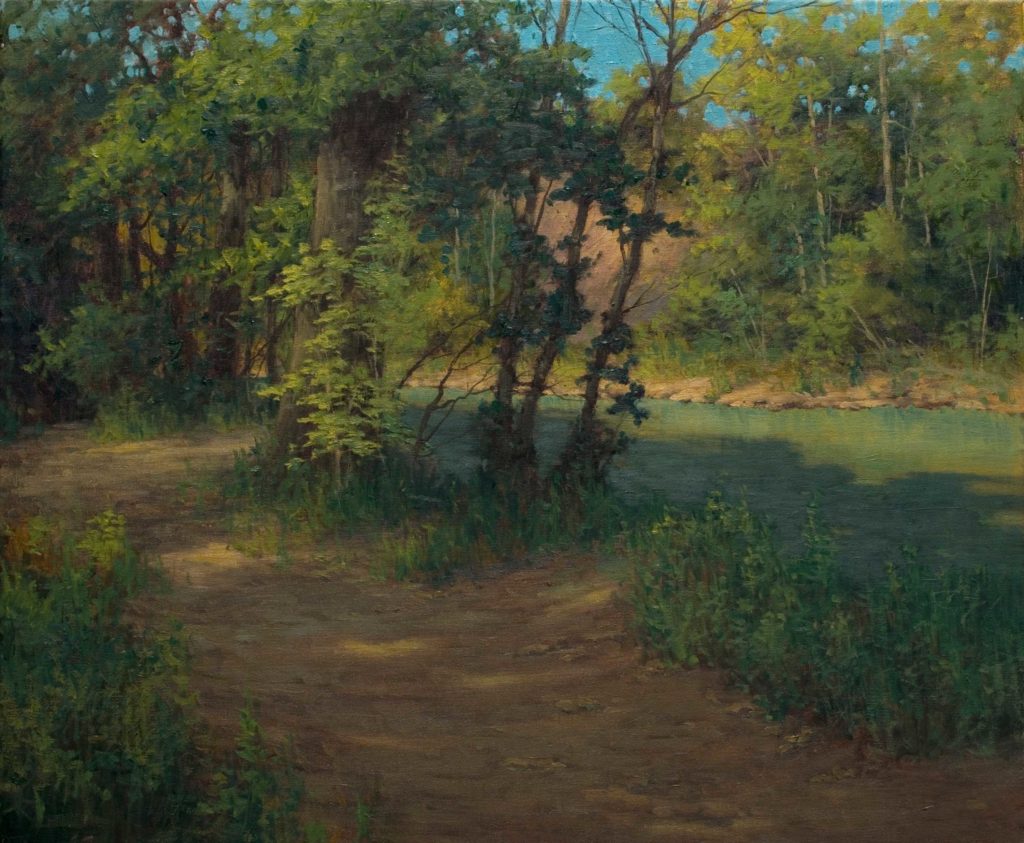
John’s work features human activity and structures. Within weeks of starting our project of painting rivers, we knew his work would help solve a problem we all discovered – the rivers could begin to look alike. There is a real danger of 100 views could becoming monotonous. John’s work as an urban painter and his love of adding people, cars and manmade structures – poles, bridges, cars, buildings – that all creates variety. Curt purchased a drone. His aerial views will be different than even what paddlers see. I began researching and finding river users who could show us features that make each river unique. I bought waders and began moving up and down the rivers in ways I never had before, especial as an artist from the shore.
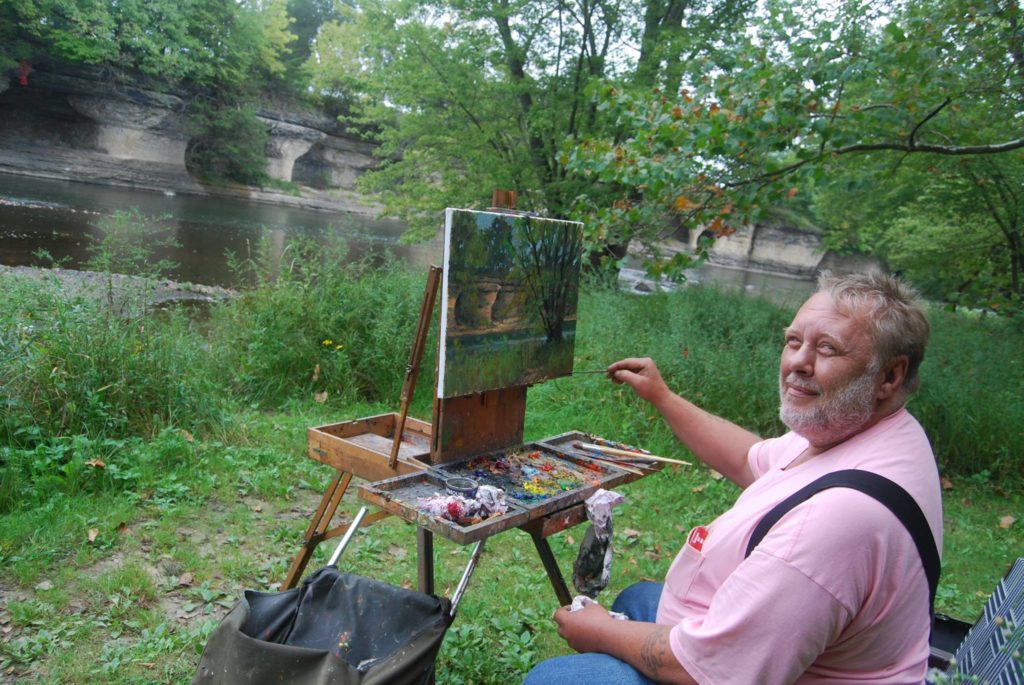
By putting a call out on social media, and creating a Facebook group page called Indiana Waterways, river users, artists, anglers, paddling groups, and conservationists began helping us find what identifiable features that make one river recognizable from another. The Mississinewa has limestone pillars at a sacred Indian site. Another river has one-of-a kind arched historical bridge with cast iron pigs instead of the “oh so cliché” European gargoyles – eat your heart out, France. In less than a month, more than 300 nature lovers and artists joined the page to make suggestions and follow our progress.
Most encouraging, was the response from the conservation community. Within weeks of announcing the project, the state division leader for the Indiana Isaak Walton League, Keith Halper, contacted us. “I saw what they wanted to do, and it was a no-brainer. I saw the words conservation and art – I’m in,” Halper said. He invited the artists to join a river clean up on the Little Calumet with a community group there, Brown Faces, Green Spaces. Paintings with people cleaning the rivers tells part of the conservation story.
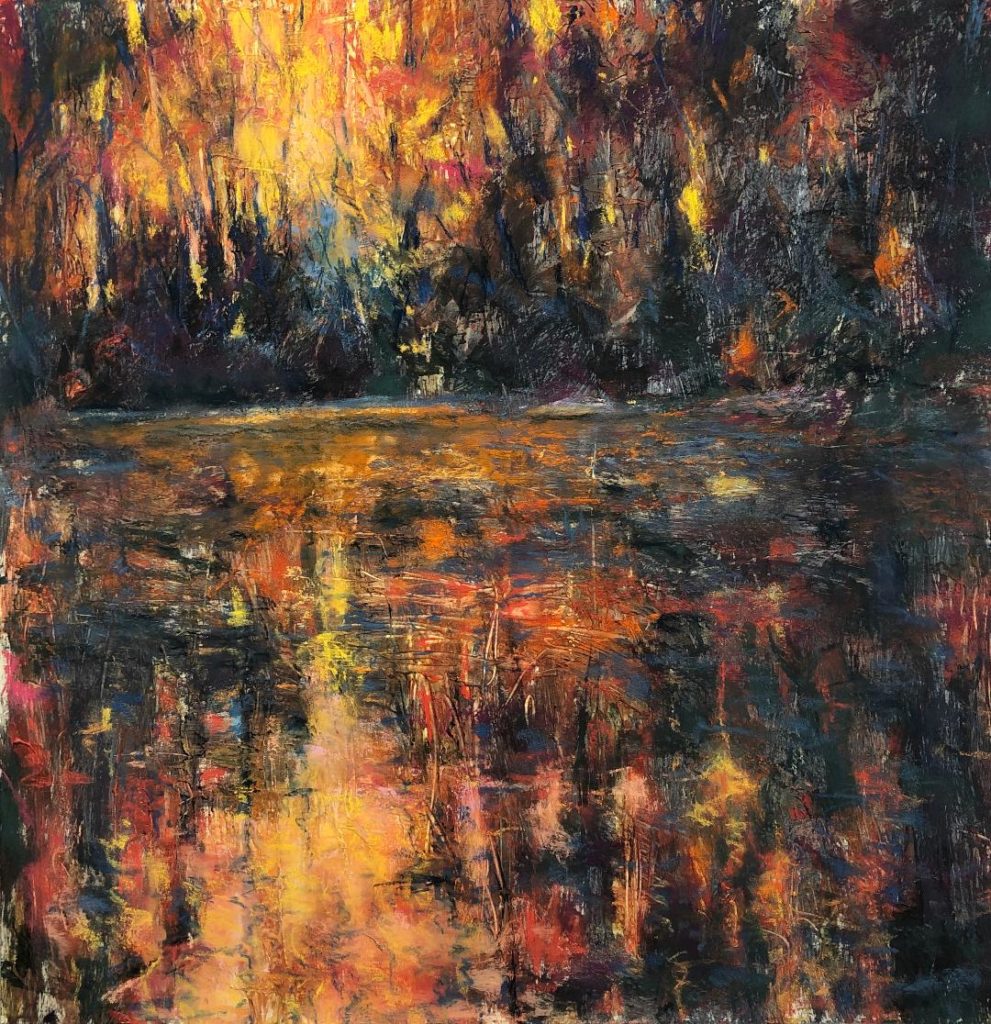
Keith’s connections have proven invaluable. We do zoom calls about every three weeks. He believes in what we are doing and is committed to help us reach the $45,000 budget goal we set to create the book and promote the project and exhibitions. Keith’s Indiana division will act as a non-profit sponsor so we can write grants and take tax deductible donations.
When we started this initiative of painting the rivers of Indiana in August, none of us had any idea it would take off so fast and find so many interested in following along and offering help.
> Click here to subscribe to the free newsletter, Plein Air Today
> And click here to subscribe to PleinAir Magazine so you never miss an issue!
> Join us January 27-30, 2021 for Watercolor Live!

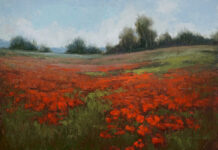
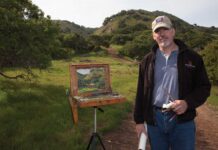
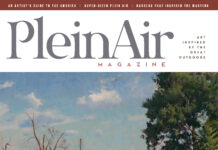
That was a great idea! We’re out in the rivers and parks anyway so why not do a collection to raise awareness of these waterways and their importance.